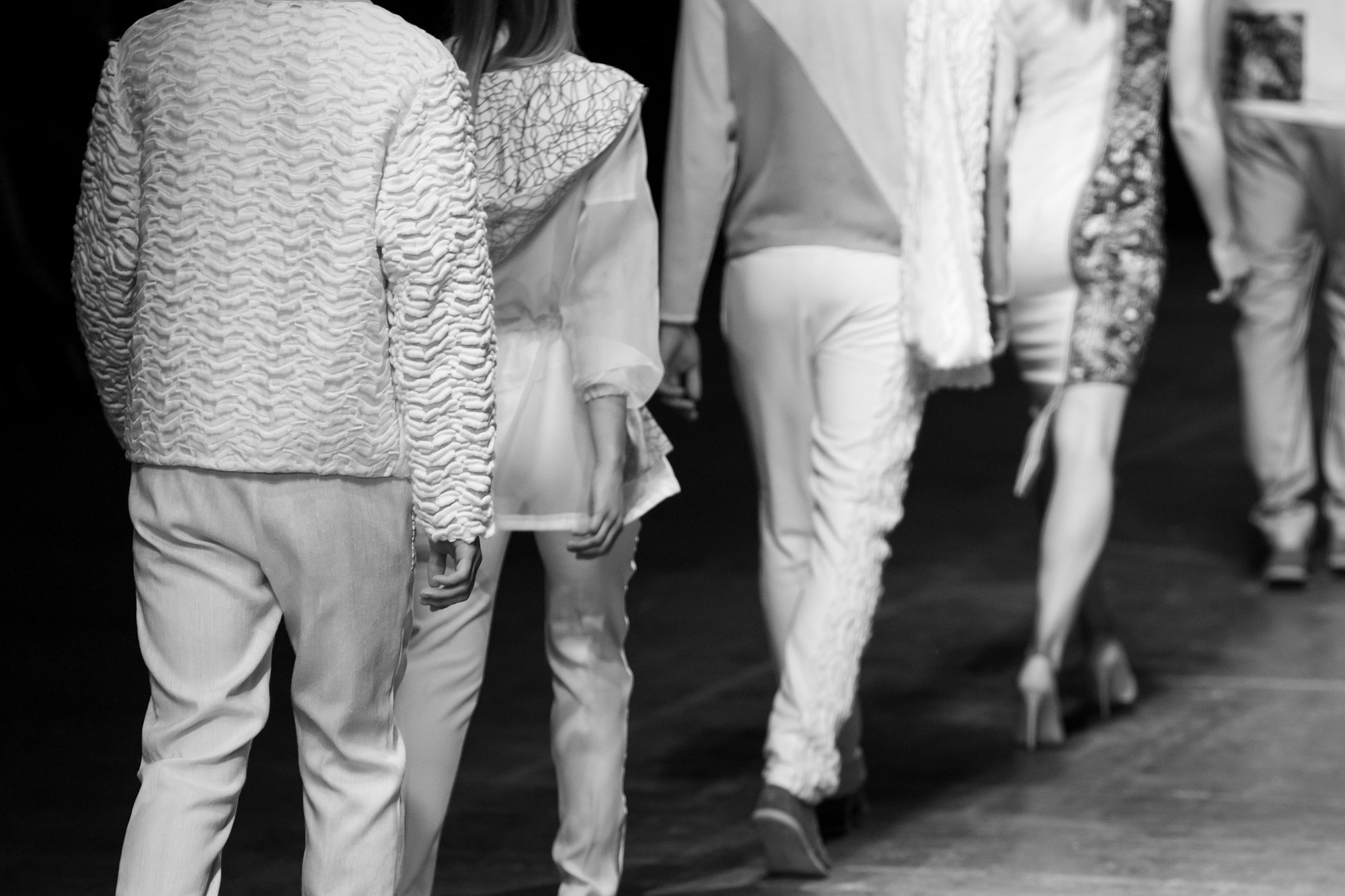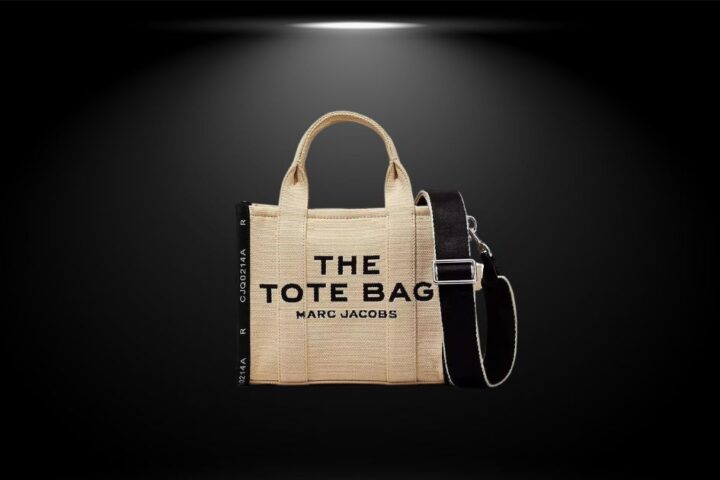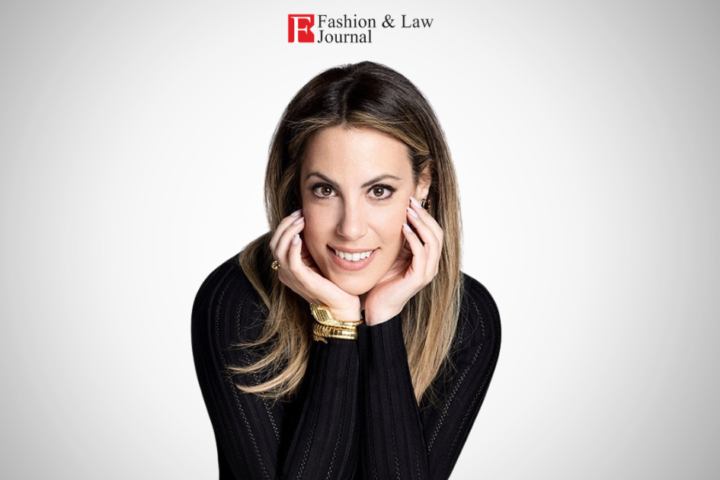“I don’t design clothes. I design dreams.” – Ralph Lauren
In the present world of fashion driven social media where even socks dream of becoming stars and belts secretly aspire to hold more than just pants, these words of Ralph Lauren ring truer than ever. Fashion isn’t about a piece of clothing anymore, it’s about crafting stories as intricate as a perfectly knitted sweater, diving into fantasies wilder than the animal printed suits, and most importantly about daring to dream bigger than those oversized pants that seem too large for a single person.
But dreams don’t come as we see it, they come with challenges and behind every elegant dress and bejewelled blazer, there’s a saga as dramatic as Indian tele soap. Behind the glam fam lie the trademark tussles, where brands bump heads over logos, slogans, signature styles, and even colour. From Gucci’s double Gs to the Nike’s iconic swoosh, these trademarks aren’t mere symbols, they are embodiment of a brand’s identity, they are holy grail, the secret sauce and sometimes, the subject of some seriously funny legal showdowns.
The fashion industry isn’t just about laces and bows; it’s also a legal maze where creativity collides with legality and fierce catwalk can save one from the court drama. Over the years, several groundbreaking judgments have set precedents and transformed the fashion industry. Here are the ten landmark judgements, each has left its own unique imprint on the ever-changing canvas of fashion industry.
- Chanel Ltd. v. Sunder Chemicals Agarbati Works (P) Ltd. and Anr.[1]
In this landmark judgement, Chanel, the undisputed queen of luxury, took on against the defendant’s using the mark “SHANELLE” for similar products. Chanel filed a suit seeing injunction based on the deceptive similarity between the marks. Chanel argued that its trademark “CHANEL” had been in use since 1925 and is globally well renowned entitling it to protection under Trademarks Act, 1999. Whereas the defendant argued that its use of the mark “SHANELLE” was bona fide and was not deceptively similar to Chanel’s mark. The court held that the defendant failed to provide reasonable justification for its adoption of the mark “SHANELLE” and that the marks were phonetically similar, likely to cause confusion among consumers. In the light of such observations, the court granted interim injunction in favour ofChanel. This groundbreaking judgement sent a message to the infringers everywhere: Cross Chanel and find yourself in legal threads. Talk about haute couture drama!
- Gucci America, Inc. v. Guess?, Inc. Gucci Am., Inc. v. Guess?, Inc.[2]
This dispute was initiated by a global fashion company which is renowned as one of the largest luxury-products brands in the world, Gucci America, Inc. (Gucci) alleging Guess? Inc. (Guess), another well renowned brand, for trademark infringement and counterfeiting. Gucci levered several accusations against Guess, among others, that certain of Guess’s products had infringed and diluted different Gucci trademarks and trade dress, which included Gucci’s green-red-green stripe mark, repeating GG pattern and diamond motif trade dress, asserting that Guess’s actions amounted to an infringement of Gucci’s intellectual property rights.
After thorough examination and meticulously reviewing the evidence in hand, the court ruled in favour of Gucci. While awarding the damages, it was considered by the court that while Guess did infringe three of the alleged designs but did not infringe a fourth. Moreover while considering other claims of Gucci, the judge didn’t seem quite impressed, it seemed to the judge that Gucci had been aware of Guess’s infringement activities for several years. It was pointed out that such delay by Gucci in pursuing infringement claim along with had caused prejudice to Guess.
This judgement doesn’t only assert the protection of of intellectual property rights but also leaves a message that trademark holders must be vigilant and act promptly in safeguarding their trademarks when they sense infringement.
- Campbell v. Acuff-Rose Music, Inc.[3]
Acuff-Rose Music, Inc. initiated a lawsuit against 2 Live Crew and their record company, alleging that 2 Live Crew’s song “Pretty Woman” infringed Acuff-Rose’s copyright in Roy Orbison’s “Oh, Pretty Woman.” The District Court ruled in favor of 2 Live Crew, determining that their song constituted a parody that fairly used the original work. However, the Court of Appeals overturned this decision, stating that the commercial aspect of the parody created a presumption of unfairness. Further, the Supreme Court ruled that the commercial aspect of a parody is just one factor to consider in determining fair use. The Court criticized the Appeals Court for placing undue weight on the commercial nature of the parody and failing to properly assess the transformative nature of parody in assessing the extent of copying. The Court emphasized that no presumption of unfairness should be applied solely based on commerciality, as it does not address the purpose of the use or potential market harm.
This landmark case established the concept of transformative use in copyright law, allowing fashion designers to create transformative works inspired by existing designs without infringing on copyright.
- Star Athletica, L.L.C. v. Varsity Brands, Inc.[4]
In this landmark judgment, LLC, Varsity, a company specializing in athletic clothing and accessories or say reigning champs of athletic apparel, filed a lawsuit against Star Athletica, LLC, alleging copyright infringement. Varsity accused that Star’s designs closely resembled their copyrighted designs used in cheerleading uniforms. Star counter argued that Varsity’s designs were not eligible for copyright protection because they were part of useful articles (uniforms) and were inseparable from their functional purpose, basically stating that something that’s just part of a practical, everyday outfit cannot be copyrighted. Both parties filed motions for summary judgment. The district court ruled in favor of Star, stating that the designs were integral to the uniforms’ functionality. However, the Sixth Circuit Court of Appeals reversed this decision, determining that the Copyright Act permits graphic features of a design to be copyrighted, even if they are not separable from a useful article.
The Supreme Court laid down two ket criteria of eligibility for copyright protection for a feature incorporated into the design of a useful article. First, that the feature must be capable of being perceived as a 2D or 3D work of art distinct from the useful article itself, meaning, it should have an artistic or aesthetic quality that can be appreciated independently of its utilitarian function. Second, that the feature must meet the requirements of being a protectable pictorial, graphic, or sculptural work, either on its own or if it were separated from the useful article and fixed in some other tangible medium of expression.
In the case of Kieselstein-Cord (KC) v. Accessories by Pearl (Pearl), Inc., the legal ramp was lit up with a serious debate over eligibility for copyright protection of belt buckles. KC filed suit against Pearl for copyright and trademark infringement along with unfair competition upon which Pearl filed summary judgment on ground the KC’s belt buckles are not copyrightable. The center issue was whether the decorative belt buckles in question could be protected under copyright law or whether they were deemed utilitarian items ineligible for protection under copyright law. Initially, it was ruled by the District Court as buckles are part of a useful article, they fail to meet the threshold of eligibility criteria for copyright protection. However, the Second Circuit overturned the judgement emphasising the artistic and ornamental aspects of the buckle thereby establishing their separability from the utilitarian function of the belt. It was acknowledged how these bejewelled buckles weren’t just hanging out on waistbands as showcased in prestigious venues like Met gala, indicating their versatility beyond their intended purpose. That’s when the new fashion mantra echoed, “Buckle up, buttercups, it’s Copyright Couture”.
- Chanel, Inc. v. What Goes Around Comes Around, LLC[5]
Or should we say Haute Couture versus Vintage Chic? Chanel, the queen of fashion spares no one. Chanel initiated a legal suit against What Goes Around Comes Around, LLC (WGACA), a vintage clothing retailer, for allegedly selling counterfeit and some unauthorised Chanel products. In the lawsuit, Chanel accused WGACA of trademark infringement, false advertising and unfair competition.
After years of litigation, a New York federal jury in February 2024 ruled in favour of Chanel on all four stated causes of action. This judgment underscores Chanel’s unwavering commitment to safeguarding its brand image and value it places on its trademark and sets it as an example for the fashion industry to actively monitor the market for potential infringement threats and pursue legal action when needed to uphold its intellectual property rights and preserve the integrity of their brand.
- Louis Vuitton Malletier S.A. v. Haute Diggity Dog, LLC[6]
One may think what a fashion brand has to do with brand engaged in pet accessories but here’s the legal scenario where luxury meets puppy love. Louis Vuitton, the luxury titan found itself in a legal pawdicament when it took on Haute Diggity Dog, LLC, a company renowned for its whimsical pet toys. The bone of contention here was the launch of Haute Diggity Dog’s “Chewy Vuiton” line of dog toys as a playful parody of Louis Vuitton’s iconic designs. Louis Vuitton without taking a breath, unleashed its cry for legal rights alleging trademark infringement faster than one could say, “fetch”.
With wagging tails, Haute Diggity Dog argued that the toys were harmless playful things and nothing more than a playful nod to luxury fashion. The court considered that the Haute Diggity Dog’s products weren’t promoted, produced, or intended to rival against Louis Vuitton and hence refused to support the infringement claim. Despite Louis Vuitton’s futile attempt to argue that Haute Diggity Dog’s products posed a hazard to dogs, the court dismissed this assertion, affirming the District Court’s ruling in favour of Haute Diggity Dog on all claims.
This judgement underscored the importance of safeguarding parody as a form of free expression, while reminding fashion brands to carefully consider the implications of legal action on brand image. Haute Diggity Dog’s victory was a tail-wagging triumph for parody lovers everywhere, reminding fashion bigwigs that a little humour never hurt anyone’s brand image.
- Hermès v. Rothschild[7]
The recent legal clash between luxury fashion and digital art, Hermès and Mason Rothschild over MetaBirkin NFTs, has emerged as a landmark judgement in application of trademark law to non-fungible tokens (NFTs). Intellectual Property Rights are meant to safeguard creator’s rights, but their application to NFTs remains the least discovered area, and the present case acts as a crucial step in the evolving route of intersection of intellectual property rights and NFTs.
The dispute between the luxury brand Hermès and artist Mason Rothschild was over the creation and sell of MetaBirkin NFTs. Hermès accused Rothschild trademark infringement, brand dilution, and cybersquatting over Rothschild’s NFTs, which depicted fur-covered versions of its iconic Birkin bags. The jury ruled in favour of Hermès in the check-list style, checking off all the accusations in the list or more like a legal version of Bingo, but only, Hermès shouting “Birkin!” instead of Bingo.
The judgement sets precedent for the cases involving application of trademark law to NFTs, by establishing that the creation and sale of NFTs could indeed infringe existing trademark rights for non-NFT uses.
- Theriot v. Louis Vuitton North America, Inc.[8]
In 2022, a class action lawsuit was filed against Louis Vuitton North America for allegedly collecting consumers’ biometric data by way of a virtual try-on tool on its site, failing to obtain prior consent from the consumers. The virtual try-on tool has emerged as a popular tool, highly used by fashion and beauty brands to enhance the online shopping experiences for their customers which operates by collecting prospective consumers’s images and processing to show how a particular product of the brand would appear on their facial geometry. Likewise, the try-on feature by LVNA provided the opportunity to everyone to try in the latest shades and handbags. However, the plaintiffs hailing from Illinois argued that LVMA by failing to provide written notice regarding the collection of consumers’ face, the purpose of such collection, and for how long the data would be retained. Responding to the allegations, LVMA moved to dismiss the claim by contending that the facial recognition technology was developed by a third-party company and the same is responsible for collecting biometric information. The court here stated that the actual roles and responsibilities of the companies involved in the biometric data collection process constitutes factual question to be resolved in the later stages of proceedings. However, the court did dismiss one charge alleging that LVNA violated BIPA by failing to have a written biometric policy stating that the plaintiffs had failed to demonstrate a particularised harm from absence of such policy.
The ruling marks a significant improvement in the evolving nature of consumer expectations in the digital era where transparency becomes a matter of concern, emphasising the development in the legal scenario surrounding privacy rights and corporate responsibility, particularly in the context of e-commerce and online retail.
- Industria de Diseño Textil, SA Inditex v European Union Intellectual Property Office (EUIPO) [9]
On 11 April 2019 the EU General Court delivered its judgment in the matter between Inditex, the parent company of well-known brand, Zara and EUIPO demonstrating the far reaching, evolving nature of fashion brands and the markets they can operate in and are expanding into. The dispute arose over the trademark application for the figurative mark, “ZARA TANZANIA ADVENTURES” for services in classes 39, 41 and 43, encompassing travel and tourism services, entertainment for tourists and other travel agency services. Inditex filed opposition against the application based on the existence of its two earlier trademarks, one, an EU word mark “ZARA,” registered in classes 25, 39, and 42 and another, same word mark registered in classes 35 and 41. To this the question arises, why a fashion brand would register its trademark in the classes of travel sector? This is because of the change in wind blowing through the fashion industry where brands have been transforming into lifestyle behemoths which becomes relevant from the existing ventures of Gucci and Ralph Lauren entering into the world of food, travel, and hospitality. Even Vivienne Westwood and Martin Grant have been on board with major carriers giving airline uniforms a fashion makeover. This shows the symbiotic relationship between fashion and travel which is often seen in the pages of glossy magazines.
The court ruled in the favour of Inditex, emphasising the importance of considering the strength of the brand’s earlier marks, reputation and their degree of distinctiveness in the market. The court asserted that the risk of unfair advantage cannot be ignored despite differences in goods and services, all relevant factors are to be considered to assess the potential risk.
- Equal Employment Opportunity Commission V. Abercrombie & Fitch Stores, Inc.[10]
The present judgement stands as an important one in regards to employment discrimination law. The gist of the cases lies in the “Look Policy” of Aabercombie & Fitch that prohibited certain clothing items like “cap”, without clearly defining it based on which they refused to hire one Samantha Elauf, a practising Muslim woman who wore a headscarf to her interview. The issues raised were whether Abercombie’s refusal to hire Samantha only on the basis of her wearing “hijab” a violation of Title VII of the Civil Rights Act constituting discrimination based on religious beliefs and whether the title VII requires employers to have actual knowledge of the applicant’s requirement for a religious accommodation before being held liable for discrimination. The Court clarified that in determining discrimination under Title VII of the Civil Rights Act, employer’s intent is more crucial than the actual knowledge emphasising the importance of accommodating religious beliefs in the workplace even if not explicitly mentioned by the employee. The court also highlighted that Title VII prohibits employers from making an applicant’s religious practice a factor in making hiring decisions.
In the end, the lawsuit was amicably resolved by a Consent Decree which provided that Abercombie would pay $50 million to settle the present lawsuit along with two other private class actions. The Consent Decree also prohibited Abercrombie from engaging in discriminatory practices based on race, colour, national origin, sex, and ensured equal promotional opportunities for women and minorities.
This landmark judgement underscores the need for employers to review and potentially adjust their policies to comply with Title VII and to train their staff accordingly. This case set a precedent for protecting religious freedoms in the workplace and preventing discrimination based on religious attire or practices.
Abercombie & Fitch had had its exclusive moments, not exactly worthy of fashion spread. It has lived its fair share of scrutiny over its discriminatory practices based on race, gender, and even disability. But like phoenix, Abercombie has risen from the ashes, with each legal dispute being a lesson to evolution, not forgetting that this redemption demands hefty legal fees and settlement agreements.
In conclusion, these judgments highlight the importance of trademark protection and the need to safeguard against deceptive practices in the competitive world of commerce. From Chanel’s victory over SHANELLE’s phonetic hijinks to Crocs’ lesson in the complexities of design and trademark law, each case underscores the significance of preserving brand identity and consumer trust.
[1] 2003 (26) PTC 52 (Delhi)
[2] 831 F. Supp. 2d 723, 102 U.S.P.Q.2d 1225 (S.D.N.Y. 2011)
[3] 510 U.S. 569 (1994)
[4] 580 U.S. ___ (2017)
[5] 1:18-cv-02253 (S.D.N.Y.)
[6] 507 F.3d 252, 84 U.S.P.Q.2D (BNA) 1969
[7] 22-cv-384 (JSR)
[8] 1:22-cv-02944
[9] ECLI:EU:T:2019:241
[10] 575 U.S. 768, 135 S. Ct. 2028 (2015)
Author:
 Sanjana Bishnoi, (Intern at Fashion Law Journal) a fifth-year law student at Bennett University, explores the intersection of law and fashion. With a hobby in art and craft and a keen interest in fashion, she delves into the legal landscape of the fashion world. With this article, she attend to bring the readers’ attention towards top ten landmark judgement that has shaped fashion industry.
Sanjana Bishnoi, (Intern at Fashion Law Journal) a fifth-year law student at Bennett University, explores the intersection of law and fashion. With a hobby in art and craft and a keen interest in fashion, she delves into the legal landscape of the fashion world. With this article, she attend to bring the readers’ attention towards top ten landmark judgement that has shaped fashion industry.









